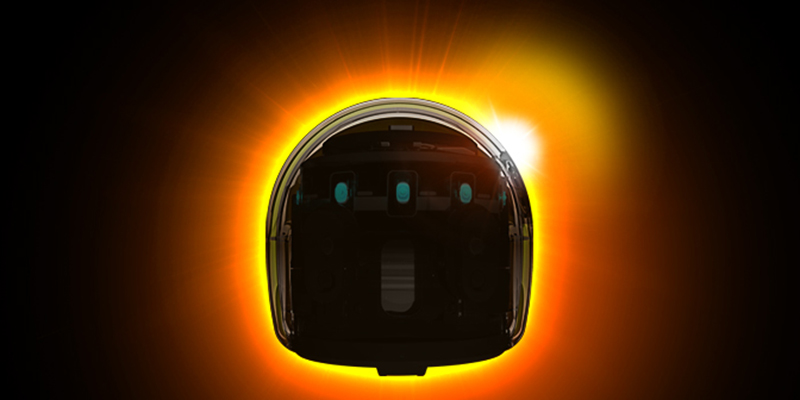Today’s total solar eclipse has made for a back-to-school season like no other—for kids and their adults alike.
For starters, some schools cancelled classes amid concerns about kids’ safety, as reported by USA Today. Scientists speculated about the eclipse’s effects on animals and crops. Meanwhile, a cottage industry of solar safety sunnies sprung up, as did a scandal over fakes that left Amazon offering up refunds. It’s been an odd mix of excitement, profits, and a bit of paranoia. For those of us of a certain age, the build up to the Great American Eclipse of 2017 has felt a little like Y2K-lite.
Now that it has finally arrived, we recommend taking a moment to talk about the eclipse as a family. Start with everyone’s observations. What did you see? How did it make you feel? Ernie Wright, a NASA data visualizer, told Vox why eclipses are so awe-inspiring:
“We kind of know—in the back of our minds—that we live in a giant ball and it revolves around a hot ball of gas, and we’re floating in space. But you don’t really believe it until you see something like a total solar eclipse, where everything is all lined up and you go whoaaa.”
That “whoaaa” moment can leave kids with questions, and parents feeling like middle school science class is light years away. Luckily, we’ve put together an eclipse activity to help you make sense of it all.
Evo Eclipse Activity
Starring Evo as the moon, this activity models the moon’s orbit during an eclipse.
What you’ll need:
• Evo Eclipse Activity PDF
• A color printer
• 1 Ozobot Evo (you can also use Bit!)
• Markers (red, black, blue, and green)
• Flashlight (optional)
1) Print the PDF and read the instructions. Give your kids a quick primer on eclipses and the moon’s orbit:
What exactly is a total solar eclipse?
Earth orbits the sun, and the moon orbits Earth. Sometimes it all aligns so the moon passes between the sun and Earth. The moon blocks part of the sun’s light from reaching Earth, casting a shadow on our planet.
What’s the path of totality?
It’s the path of the moon’s shadow. Today, it cut across the U.S. from Oregon to South Carolina. If you live in the path of totality, you saw a total eclipse. Outside the path, you saw a partial eclipse.
So what does a solar eclipse look like from space?
Have you ever watched a cloud’s shadow move over the ground? If you were an astronaut (or an alien) watching today’s eclipse from space, it would look kind of like that.
What is angular momentum?
The moon moves around Earth in an elliptical (oval-shaped) orbit. As it gets closer to bigger masses, like Earth and the sun, it speeds up. As it moves away again, it slows down. This is called angular momentum. If you’ve ever spun yourself around in a chair, you’ve probably played with angular momentum. When you held your arms out, you slowed down. Pulling them in sped you up. Angular momentum can help explain why the Great American Eclipse only lasted a few minutes!
2. Now, It’s time to apply everything you’ve learned to complete the eclipse activity. If you have a flashlight handy, place it down on the left side of the sheet as “the sun.” Draw the correct color codes. Your goal is to make Evo speed up as it approaches the sun, and slow down as it moves away. When you’re done drawing, turn Evo on and calibrate.
3. After calibrating, test out your orbit. Place Evo on the line and your bot should speed past the sun, creating a brief but brilliant total eclipse of the Evo!









